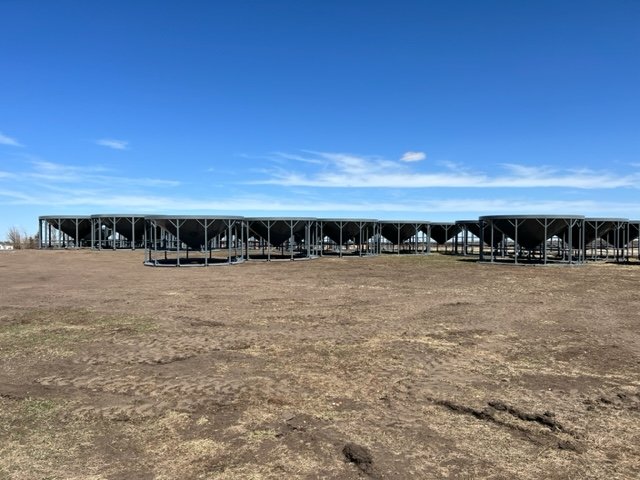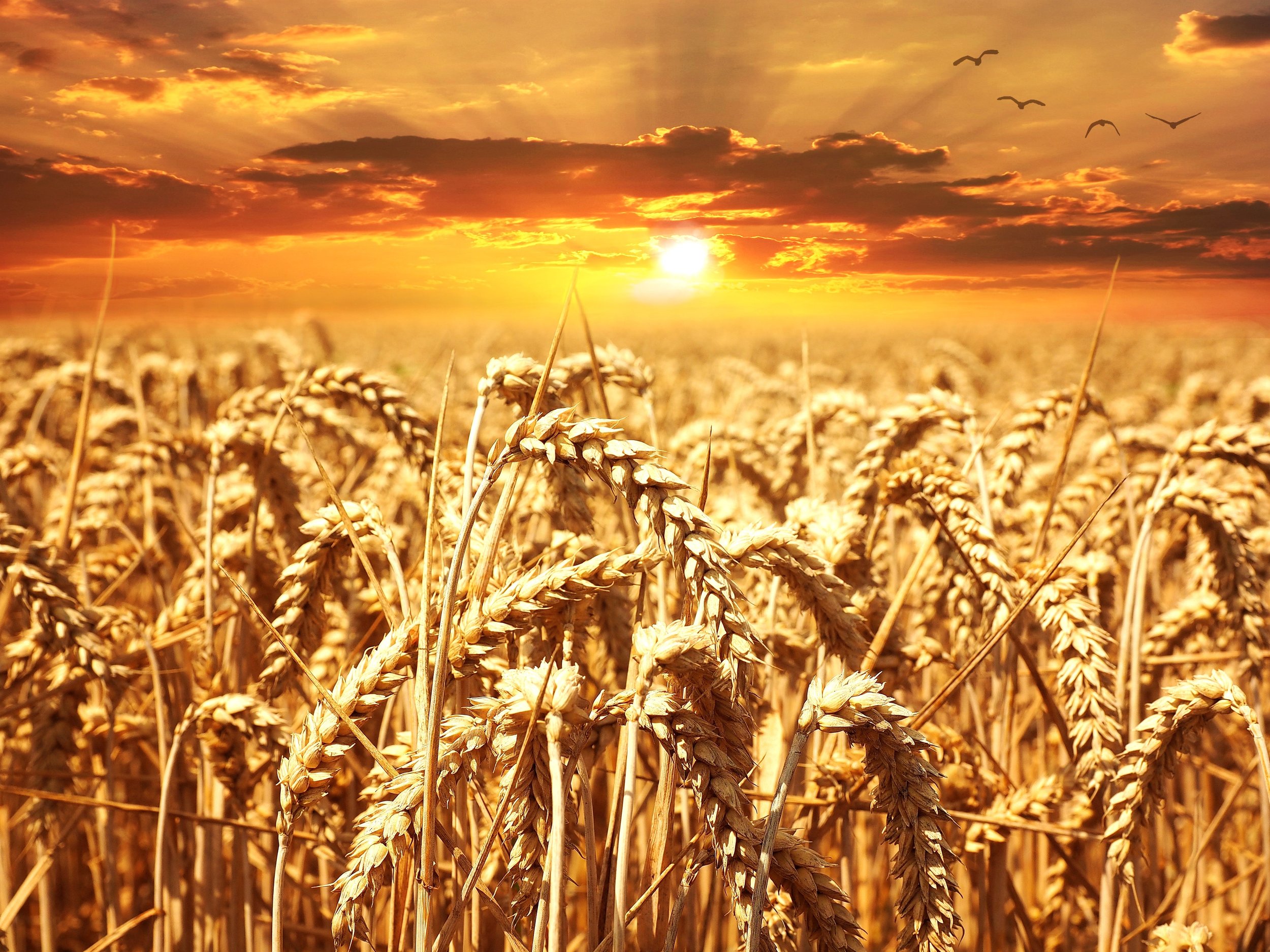Customer Appreciation Day Plus Shop Tour
Please join us April 16th for a Customer Appreciation day and a tour of the shop. We will have our partner reps on hand, door prizes and a bite to eat with refreshments.
Wednesday April 16, 2025
Open House 10am-3pm
Lunch 11:30am - 1:30pm

Bin Deals
2406 (10,300bu) $39,000
2407 (12,000bu) $43,000
Price includes Quad skid, V Trough aeration, 36” remote lid, Full bin indicator, Temperature Cable, Built on site.
*Delivery Extra

We have door removal kits, ladders, lids and the crews to do all the work
MA -405 Portable Moisture Analyzer
On Special $3,100
Don’t let heated grain happen to you.
Ask us about how we can set you up with a monitoring system or fan automation. We have some winter specials on that can fit any size or budget.

Agronomy Section
With spring fast approaching we thought we would add an agronomy part to the newsletter. Incase you didn’t know we offer generic chemical from FBN and offer Nano Technology fertilizers through Vantage Ag.
Ask us how we can help you get some of your input costs down and the advantages of FBN and Vantage Ag products.
Potassium: A Nutrient That Deserves More Respect
Potassium: Understanding Its Role and Management in Western Canada
Potassium is often misunderstood as a macronutrient in Western Canada. Our soils are naturally rich in potassium, thanks to the abundance of potassium minerals like mica and feldspar in the parent material. Typically, prairie soils contain between 15,000 to 50,000 pounds of potassium per acre in the top 6 inches. As these minerals weather over time, potassium ions (K+) are slowly released from crystal structures, but only about 1% of the total potassium in soil is readily available for plant uptake. Around 10% to 20% of soil potassium is slowly available from smaller mica, feldspar particles, and specific clay types.
Available potassium moves to plant roots through diffusion, but this process only works effectively within a 6mm radius. As a result, the equilibrium between the slowly available and readily available potassium pools is crucial for meeting plant nutrient needs. The rate at which potassium moves between these pools varies depending on soil mineralogy and clay content, creating challenges for traditional soil testing. Many extractants used in soil testing only measure plant-available and exchangeable potassium over short periods and fail to capture the replenishment process.
The Impact of Minimal Tillage on Potassium Availability
Over the past 30 years, many farms in Western Canada have adopted minimum or zero-tillage practices. While this has generally improved the soil profile, potassium availability is one area of concern.
We began working with a grower just north of Edmonton who has been practicing minimal tillage since 1992 and has been conducting benchmark soil testing over the same period. The results show a significant increase in soil organic matter (often doubling) but a gradual decrease in available potassium, phosphate, copper, and zinc.
The grower was puzzled as to why these nutrients were becoming less available. The answer lies in the immobility of these nutrients in the soil. When plant matter is returned to the field at harvest, mobile nutrients are recycled back into the soil and root zone, but immobile nutrients like potassium remain near the surface. If you conduct a soil test in the top few inches of the soil, you may find high concentrations of these nutrients. Many growers have recognized this and till a few acres each year to redistribute nutrients back into the soil profile, especially since most potassium resides in the top 6 inches.
The Role of Potassium in Plant Water Regulation
Potassium plays a crucial role in regulating water use within plants. It helps manage water loss (transpiration) through stomata (pores) in the leaves. While stomata must open to allow CO2 and O2 exchange, this process also leads to water loss. Transpiration creates a gradient that pulls water and nutrients through the xylem to the leaves. When plants are potassium-deficient, this process is impaired, leading to wilting and making the plants more vulnerable to heat stress.
Key Tips for Potassium Management
Potassium Availability in Western Canada: Most soils in the region have sufficient potassium for crops like canola, and soil test results often show little change over time. Potassium taken up by plants mostly remains in plant biomass and is quickly returned to the soil. Erosion of clay particles also helps replenish potassium levels. However, sandy soils with low clay content, especially in forages where a significant amount of biomass is removed annually, may show potassium deficiencies.
Cereal Crops and Potassium Deficiency: Cereal crops may show symptoms of potassium deficiency when soil levels fall below 300 pounds per acre. These symptoms can resemble nitrogen deficiencies as potassium moves from older leaves to newer ones. Yellowish-brown leaf margins and mottled older leaves are signs of potassium deficiency. Potassium shortages can also lead to uneven pod maturity in crops like canola. It’s recommended to apply potassium when levels approach or fall below 300 pounds per acre (150 parts per million).
Conditions Favoring Potassium Deficiency: Potassium may be deficient in acidic soils, poorly drained soils, cooler temperatures, compacted soils, and during hot summer temperatures.
No-Till and Nutrient Availability: Potassium and phosphate can become limited in long-term no-till soils as these nutrients tend to accumulate near the soil surface.
Traditional Potassium Sources: Potassium sources with high K2O content often have a high salt index, which can be problematic for plant health.
Potassium’s Role in Heat Stress: Potassium is vital for regulating water use in plants, particularly during hot summer months. A potassium deficiency can severely impact a plant's ability to withstand heat stress.
By understanding these dynamics and adjusting potassium management practices, growers can optimize nutrient availability and ensure healthy, resilient crops.
Sub-nano Potassium
Our advanced fertilizer technology solves many of the problems we have with potassium nutrition. Why place all of that salt based synthetic fertilizer in the dirt if you don’t have to?
Our new sub-nano liquid formulation delivers potassium directly to your plants, ensuring faster absorption, maximum efficiency, and healthier, more productive crops.
Spray it on and see the difference!
350 mL/acre - $12.60 per acre for low available K!
100 mL/acre - $5.40 per acre for a K top up!

MJ Enterprises Commercials
Contact us.
MJ Enterprises Ltd.
matthewjenterprises@gmail.com
780-608-4514
RR 1 Daysland Alberta T0B 1A0











